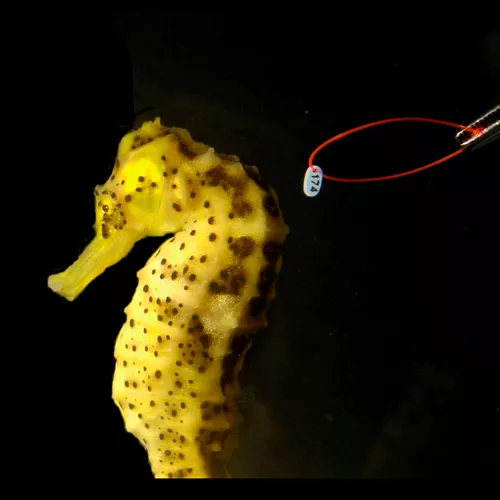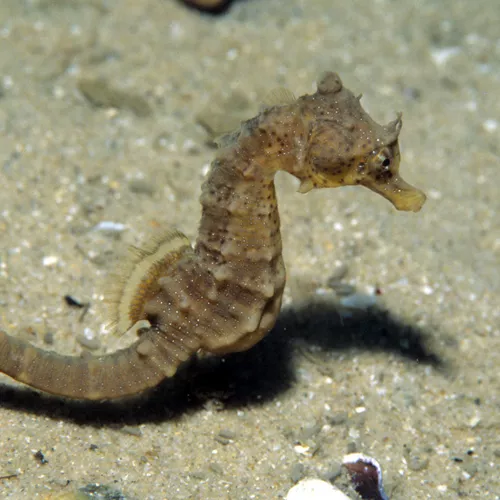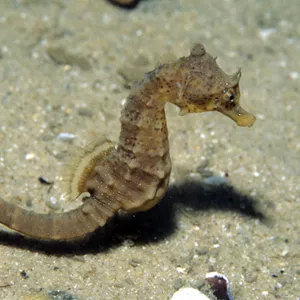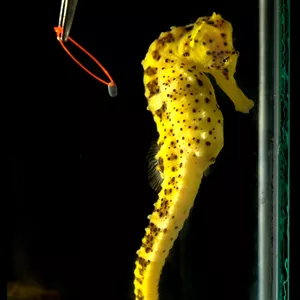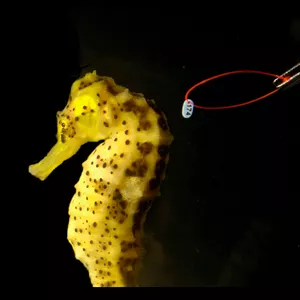Seahorses feed primarily on plankton that swims in the seawater. They generally hold on to sea grass with their tail to avoid drifting away with the current. Here they wait for food to pass by and eat it. Also small crabs or shrimps are on the seahorses' menu.
The head of the seahorses is more reminiscent of a horse, but the rest of the body is more like a worm. As you might guess, these sea creatures take their name from their outward appearance.
The seahorses live in the warmer seas such as around South Australia and New Zealand, where most of them live. So far there are over 42 recognised species, varying in size, colour and habitat.
In Europe, seahorses can be found in the Mediterranean, on the European Atlantic coast and around the Canary Islands. The long-footed seahorse and the short-footed seahorse are the main species living here.
The seahorse is very popular among many of our visitors and has also made it onto the coat of arms of the municipality of Timmendorfer Strand in Schleswig Holstein.
Unfortunately seahorses are threatened with extinction due to the increasing pollution and destruction of their natural habitat. In addition, around 150 million seahorses are caught and killed each year for use in traditional Asian medicine.
